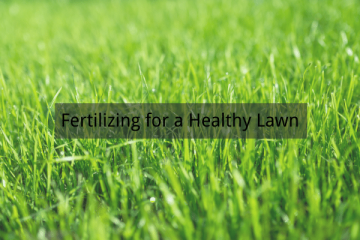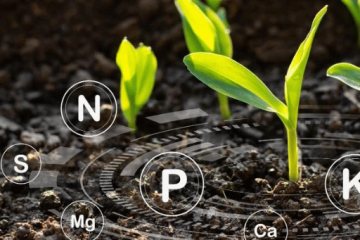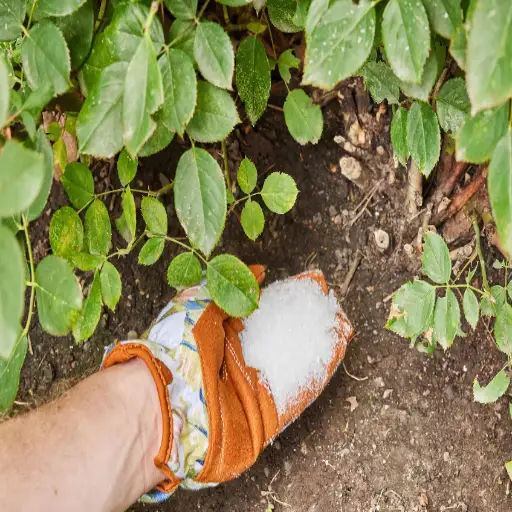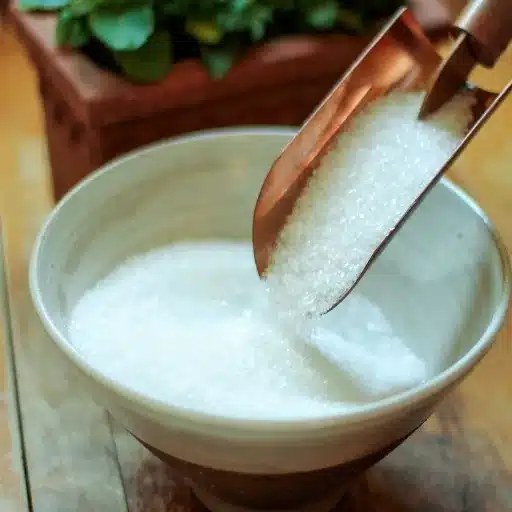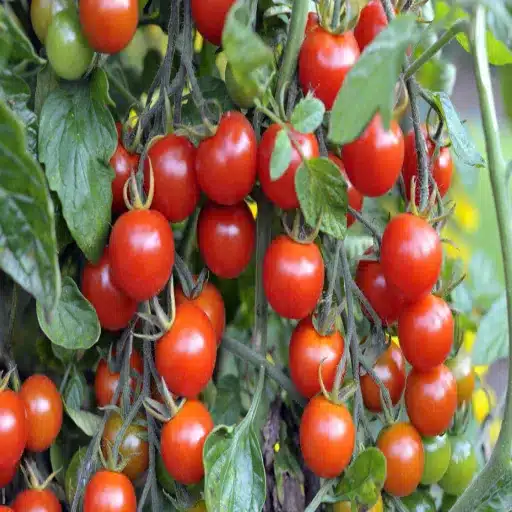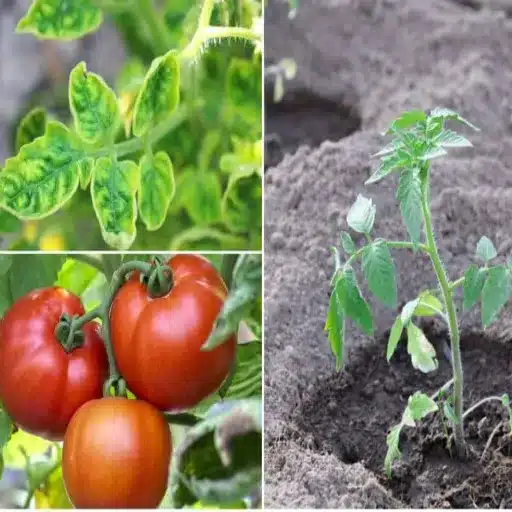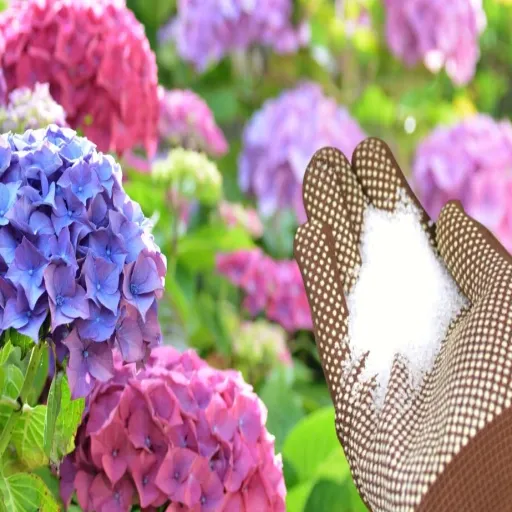Epsom salt, a naturally occurring mineral compound of magnesium and sulfate, has gained recognition among gardeners for its potential to enhance plant growth and soil health. Its versatility and affordability make it an appealing addition to any gardening toolkit. But how exactly does Epsom salt benefit your garden, and what is the correct way to use it? This guide aims to provide an in-depth understanding of Epsom salt’s role in plant nourishment, practical application methods, and key considerations to ensure its effectiveness. Whether you’re tending to vegetables, flowers, or shrubs, this comprehensive overview will help you make informed decisions about incorporating Epsom salt into your gardening practices.
How to Use Epsom Salt in the Garden?
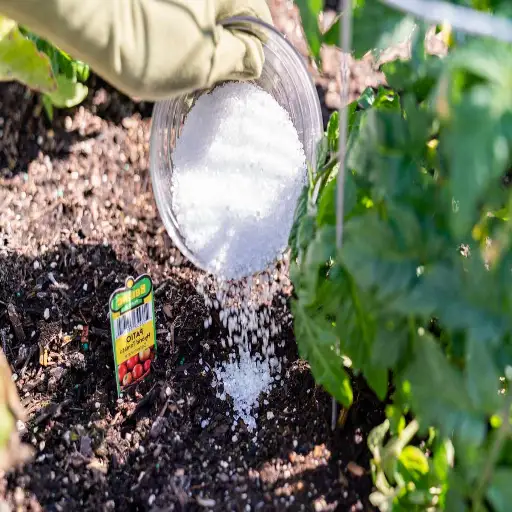
Proper Dosage: How Much Epsom Salt Per Gallon?
I find that the recommended dosage of Epsom salt varies according to the plant you are working with. In specific circumstances, such as a general garden, the standard mixture is accomplished by dissolving 1 to 2 tablespoons of Epsom salt per gallon of water. This level delivers the appropriate ratio of magnesium and sulfur for nutrient assimilation without the danger of oversaturation.
- For houseplants/shrubberies: 1 teaspoon per gallon of water liberally applied once monthly, prevents magnesium and sulfur deficiency.
- For vegetables: 1 tablespoon per gallon during the growing season every two weeks optimally encourages growth and heavy fruiting.
- For flowers and ornamental shrubs: 1 to 2 tablespoons per gallon, bi-weekly to enhance blooming and plant health.
These dosages provide Epsom salt (magnesium sulfate) dissolving capacity in water to immediately boost magnesium, which is essential for chlorophyll formation. Always respond to the individual needs of the plant about a soil test, especially for ebb and flow systems where paralimbic magnesium levels can block the absorption of calcium and potassium.
Methods: Foliar Spray vs. Soil Application
A sound choice between foliar spray and soil application for magnesium supplementation requires a consideration of the pros, cons, and technical implications of each.
Foliar Spray:
- Purpose: Foliar spray provides the plant leaves with magnesium which is easily absorbed and rectifies any magnesium deficiency the plant may have.
- Technique: Spray one gallon of water mixed with a tablespoon or two of Epsom salt ensuring the salt dissolves completely so there is no clogging of the sprayer. Target the surfaces of the leaves in the early morning or late afternoon when evaporation is less likely to occur.
- Effectiveness: Foliar spray can help with severe magnesium deficiency and also supports soil with pH, compaction, and nutrient issues.
- Precautions: Do not use foliar sprays during times of extreme heat as it will scorch the leaves. Aim to spray every 10-14 days for the best outcome.
Soil Application:
- Purpose: Soil application improves magnesium availability in the long run and focuses on the areas where the roots lie.
- Dosage: Add one or two tablespoons of Epsom salt to a gallon of water and utilize it during normal watering days. For bigger places, one pound for every 100 square feet in the garden can be used.
- Benefits: Epsom salt helps roots absorb water and magnesium effectively. In the long term, it increases plant’s health and chlorophyll as well.
- Considerations: Test the soil beforehand to ensure there’s a magnesium deficiency and monitor the alkaline level since they can dictate how easily the plant absorbs magnesium.
By carefully assessing plant-specific needs along with soil and environmental conditions, both methods can effectively correct magnesium deficiencies and improve overall plant vigor.
Is Epsom Salt Good for Tomato Plants and Peppers?
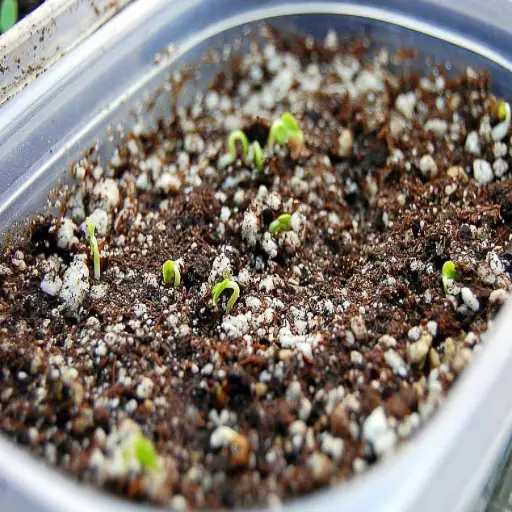
Preventing Blossom End Rot with Epsom Salt
Blossom end rot occurring in tomato and pepper plants is likely attributed to insufficient Calcium levels, which hampers the growth of healthy fruit. Epsom Salt (magnesium sulfate) is promoted to help, but I would advise caution. Adding Epsom Salt, in my opinion, will not directly resolve the calcium deficiency because it supplies magnesium as opposed to calcium. If calcium uptake is the primary issue, it will surely help if magnesium is a concern.
- Soil Testing: Determine calcium and magnesium content in the soil. Epsom salt may be applied if magnesium content is found to be low so that the nutrient balance can be corrected for better calcium uptake.
- Application Rate: for magnesium supplementation, I dissolve Epsom Salt in water and apply it to the base of the plants once every two weeks. A tablespoon of Epsom Salt is sufficient for a gallon of water per base. Overuse of Epsom Salt should be avoided as excessive magnesium may stifle Calcium absorption.
- pH Monitoring: For tomatoes and peppers, calcium is most beneficial when soil pH is within the range of 6.2 and 6.8. If this is not the case, then nutrient intake is greatly slowed regardless of the presence of calcium.
Ultimately, managing blossom end rot involves ensuring balanced soil nutrients and environmental stability. While Epsom salt can be part of a broader strategy, its application should be justified by measurable deficiencies and used alongside practices like maintaining consistent watering and mulching to prevent calcium transport issues.
Enhancing Growth in Tomato Plants
For enabling the optimal growth of my tomato plants, I ensure that the environmental conditions and nutrition needs for them are satisfactorily met. The following are the most important aspects I pay attention to:
- Soil pH: I ensure the soil pH is maintained between 6.2 and 6.8 since the development of the plants is impacted positively in these ranges. In addition, I periodically test the soil to ensure that I am within the right pH ranges.
- Nutrient Balance: I checked through a soil test that the soil moderately qualifies in terms of nitrogen, phosphorus, potassium, and calcium. Based on soil test results, I apply fertilizers or soil amendments to correct any deficiencies for example, lime or calcium nitrate can be used to remediate calcium deficits.
- Watering Practices: Stress and calcium movement challenges such as blossom end rot can result from erratic watering, so I ensure to provide constant attention. Per week, I strive to provide 1-2 inches of water while taking my local rainfall and soil drainage conditions into account.
- Temperature Control: Tomato plants preferably do well when exposed to temperatures of 70-85°F during the day and above 55°F at night. Other temperatures can cause stunted growth. During extreme conditions, I take the necessary precautions by using shade cloths or other protective materials.
Using organic mulch retains moisture, regulates temperature, and minimizes water evaporation, ultimately ensuring stable growing conditions and decreasing fluctuations in the environment.
Best Practices for Using Epsom Salt on Peppers
If done the right way, applying Epsom salt to peppers can be particularly useful since it contains magnesium and sulfur which are key for plant growth and development. Here is how I do it:
- Assessing Need: Initially, I make sure to check the magnesium levels of the soil using specific tests to confirm if the salt is needed. Every nutrient needs to be in a sensible range and a shortage of magnesium is commonly seen due to over-supplementation. Chlorosis that occurs towards the interveinal region of the leaf indicates magnesium deficiency.
- Application Rates: When spraying the foliage, I use a diluted solution of salt in water, which is 1 tablespoon of Epsom salt per gallon of water, and when applying it to the soil, I put 1 teaspoon per square foot. This rate helps me to not over or under-supplement contrary to the plant’s system solubility and absorption levels.
- Timing and Frequency: The foliar application is repeated every 3-4 weeks during the growing stage of the plants, especially when the flowering and fruiting stages begin. Having timely Epsom salt application during these stages can enhance nutrient absorption and increase the overall yield.
- Observation and Modification: I supervise the plant’s post-treatment application for any changes as well as underuse/overuse signs. Frequent soil retests are done to guarantee that the magnesium levels are sufficient and remain appropriate for growth.
By following these well-documented and reasonable processes, I managed to use Epsom salt for promotingthe growth and bearing of fruits in pepper plants while significantly reducing the chances of suffering from negative consequences associated with over-misting.
Can Epsom Salt Affect Soil pH?
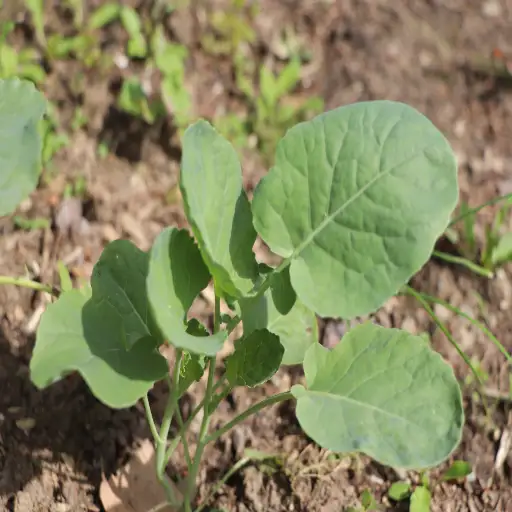
Understanding Soil pH and Epsom Salt
Magnesium sulfate, or Epsom salt, neither increases nor lowers the soil pH because it is claimed to be pH neutral. The measure of acidity and alkalinity of the soil known as soil pH is determined by the organic matter, soil composition, and certain other factors like lime, sulfur, and a few others. Epsom salt however has the potential to affect certain soil components both directly and indirectly.
As for the application in soil, magnesium (Mg²⁺) and sulfate (SO₄²⁻) ions will dissociate. Under average conditions, the above-mentioned components do not take part in altering acidifying or alkalizing reactions which means the overall soil’s pH remains stable. Keep in mind that crop pH requirements vary from one crop to another. For example luminous test components. One of the crops is peppers which grow best at soil pH levels of 5.8 and 6.5.
- pH Stability: Epsom salt with a standard dosage of 1-2 tablespoons per water gallon does not aid in creating a fluctuation in soil pH.
- pH Scale: Soil pH is set within the range of 0-14 where values lower than 7 depict acidity and above indicate alkalinity.
- Magnesium Content: Provides essential Mg²⁺ ions, critical for chlorophyll production and nutrient uptake, without altering soil pH.
- Application Rate Justification: Although there are no alterations in pH balance, soil tests after application are important, as overuse does create nutrient imbalance.
Epsom salt does bring value and helps retain the chemical equilibrium of the soil, but only when applied in moderation.
Conducting a Soil Test Before Application
Ensuring the soil has been adequately and appropriately applied is done best through a soil test. This soil test must include:
- pH Level: The indicator of whether the soil is acidic, neutral, or alkaline which prevents interference during Epsom salt application.
- Magnesium Content: Identifies whether the soil lacks sufficient Mg²⁺ ions, which are vital for plant health.
- Sulfate Levels: Do not exceed in Epsom salt application without determining the concentration of different sulfate ions to prevent saturation.
Effectively following these practices will avoid component overuse, soil balance disruption, and underperformance in growth rates for the plants. Regular testing post-application is also recommended for monitoring the overall condition of the soil over time.
Are There Plants That Don’t Like Epsom Salt?
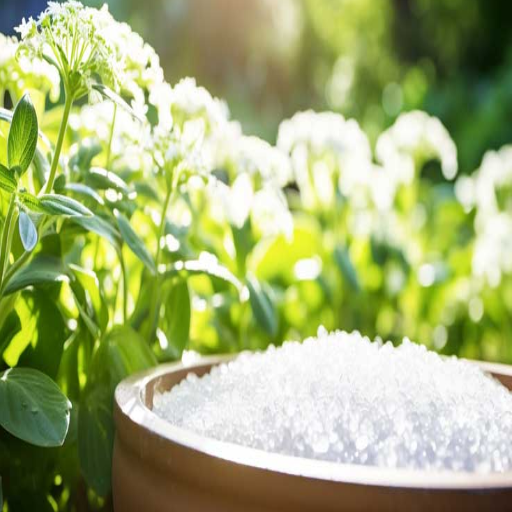
Identifying Plants Sensitive to Epsom Salt
Indeed, certain plants are prone to be affected by Epsom salt and its use needs to be scrutinized. For instance, sage, rosemary, and other herblike plants grow in nutrient-deficient soils, so the addition of magnesium sulfate could harm them. Over-application can cause tremendously high levels of Nitrogen or Potassium, both of which are key for growth, but also can imbalance essential nutrient levels. Moreover, blueberries and azaleas, which are known to thrive in acidic soil, can too suffer from being deficient in Epsom salt, as Epsom salt may quite possibly alter the pH of the soil inappropriately.
- Initial Soil Magnesium Levels: Before providing Epsom salts, it is highly advised to undertake soil tests to confirm a Mg deficiency. In general, 20–40 ppm of Mg is sufficient for optimum plant health.
- Sulfate Tolerance: SO₄²⁻ ions, in excess, beyond a certain point can impair the absorption of Newport nutrients due to lack of sufficiency, so ascertain the tolerance for specific plants.
- pH Sensitivity: Changes in soil pH should also be observed after Epsom salt application since too much Epsom salt can decrease the acidity in soil which is detrimental to certain plants.
After considering and analyzing all these factors as well as the needs of the plant, one can apply Epsom salt with a greatly reduced risk of harming the overall plant health.
Alternatives for Sensitive Plants
Some plants may be sensitive to Epsom salt application due to its specific nutrient concentration or pH. In such cases, the following options can be considered:
- Dolomite Lime: This material is very rich in magnesium (Mg) and calcium (Ca) and is very desirable for plants that need pH change. Furthermore, dolomite lime is useful in buffering the acidity of soils.
- Magnesium Chelates: Magnesium EDTA or some other chelated forms have high Mg content and very little effect on pH. Technical Parameters: Chelated Mg is available within the pH range of 4.5 to 7.5, which encompasses most soils.
- Langbeinite (K₂Mg₂(SO₄)₃): A natural mineral providing magnesium plus potassium (K) and sulfur (S), for crops having moderate nutrient needs.
To use any of the alternatives above, the plant’s ability to endure pH adjustment, magnesium demand deficiency, and general nutritional needs have to be considered. The application rates have to be soil-specific to support the crop requirements, therefore, crop monitoring is needed.
Signs of Overuse in Garden Plants
Concentrated utilization of magnesium-based amendments can drastically harm your garden’s plant health. Hints of such harms include chlorosis, moderation in micronutrient uptake, and advancement decrease in plant development. Furthermore, having supersized quantities of magnesium in the soil can also enhance the level of salinity in the soil, thereby dwindling the water retention capabilities and the overall root condition.
- Cation Imbalance: An increase in the levels of magnesium in the soil could lead to a decreased ability to exchange cations from the soil like calcium and potassium. Therefore, to maintain the correct balance between magnesium and minerals, soil inspection should be habitual to make sure the desired ratios are from three to seven as the uppermost limit.
- PH Impact: Over-applying amendments that contain magnesium may enhance pH levels in the soil, thereby creating an unfriendly snippet of range, constraining growth for the majority of the plants,and limiting the availability of micronutrients.
- Water Dynamics: Those pores in the ground that are filled with higher levels of magnesium salts tend to blossom at extreme levels of salinity. High study levels obliterate the direct water movement and absorption of plants, especially those with poor draining soil.
To overcome the major hurdles, an enhanced frequency for soil examination is the most suitable suggestion to maximize the application of amendments and keep the plant nutrition requirements a balanced without going overboard.
How to Use Epsom Salt for Potted Plants?
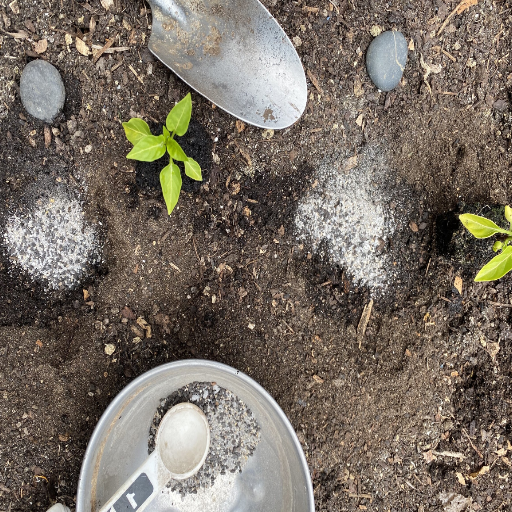
Dosage for Potted Plants
The dosage of Epsom salt to water, when treating potted plants, is 1-2 teaspoons per gallon, depending on the plant type. It can be administered once every four to six weeks for the duration of the growing season to prevent overdosage of magnesium and sulfur which can impede other nutrients. For foliar spraying purposes, the salt should be mixed in the proportion of 1 teaspoon per gallon of water and applied directly on the leaves. Stir the mixture enough to make sure the solute is evenly dispersed.
- Magnesium Content: Epsom salt can quickly rectify magnesium deficiencies since it is composed of around 10% magnesium.
- Sulfur Content: Epsom salt material also has around 13% sulfur concentrated which is critical for protein and chlorophyll synthesis.
- Impact on pH: Because Epsom salt has a neutral pH, it can be used in almost all potting mixtures without disrupting the existing soil balance.
- Application: Potting salts should be used with caution as they can build up in the potting soil and affect moisture retention as well as general plant health. Soil salinity should be monitored regularly.
Adhering to these factors helps to ensure that no diaper symptoms manifest from potential nutrient deficiency.
Applying Epsom Salt to Indoor Gardens
While applying Epsom salt to my indoor gardens, I take care to measure the quantity of salt and the method of application so as not to affect the health of the soil and crops. I usually mix 2 tablespoons of Epsom salt in a gallon of water, which I then use as a foliar spray or soil drench. This concentration provides adequate amounts of magnesium and sulfur, so the risk to plants is minimal.
- Solution Mixing: The Epsom salt has to be completely dissolved in the water as partially dissolved salt can result in a few leaves with scorch marks.
- Application Frequency: I apply the solution once in 4-6 weeks while looking for signs of over-application – such as the formation of white crusts on soil or browning of leaf tips.
- Target Application Areas: With foliar sprays, I ensure that the lower surfaces of leaves are well covered, as most of the nutrient absorption occurs there. With soil drenches, I pour the solution over the potting medium.
I can supplement the nutrients of the plants to ensure their healthy growth indoors by doing so and watching their responses.
Reference sources
Frequently Asked Questions (FAQs)
Q: What is the benefit of using Epsom salt for plants?
A: Epsom salt can help improve nutrient uptake, enhance seed germination, and promote bushier plant growth. It contains magnesium and sulfate, which are essential for healthy garden soil.
Q: How often should I apply Epsom salt to my vegetable garden?
A: For optimal results, one tablespoon of ultra Epsom salt per gallon of water can be applied every two weeks. This helps ensure that plants grow bushier and benefit from Epsom salt effectively.
Q: Can Epsom salt be used for peppers and tomatoes?
A: Yes, Epsom salt is particularly good for plants like peppers and tomatoes, helping them to produce more fruit and enhance flavor.
Q: How do I prepare an Epsom salt solution for my garden?
A: To prepare an Epsom salt solution, dissolve one tablespoon of ultra Epsom salt per gallon of water. Use a hose and spray attachment for easy application around the base of plants.
Q: Are there any plants that don’t like Epsom salt?
A: While Epsom salt is generally good for plants, some might not benefit from its use. It’s important to research specific plant needs as some may not require additional magnesium or sulfate.
Q: How does Epsom salt enhance seed germination?
A: Epsom salt enhances seed germination by providing essential nutrients that help seeds sprout faster and develop stronger seedlings.
Q: Is there a risk of Epsom salt accumulating in the soil?
A: While Epsom salt can accumulate in the soil over time, using the recommended amounts minimizes this risk. Regular soil testing can help monitor magnesium levels.
Q: How can I use Epsom salt in my outdoor space?
A: You can incorporate Epsom salt in gardening by mixing a cup of ultra Epsom salt into the soil or using a diluted solution to water plants every two weeks.
Q: What is the recommended dosage of ultra Epsom salt per foot of plant height?
A: For general use, apply one tablespoon of ultra Epsom salt per foot of plant height to help plants grow optimally.

